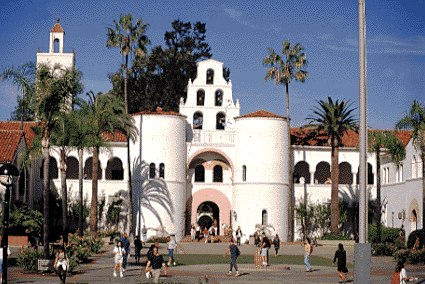San Diego State University Uses Terascala-Powered HPC Storage Appliance
To study DNA of viruses and bacteria
This is a Press Release edited by StorageNewsletter.com on April 22, 2015 at 2:59 pmTerascala, Inc., in HPC storage management software, announced that its TeraOS software powers the Lustre-based parallel storage appliance at the Computational Science Research Center (CSRC) data center at San Diego State University (SDSU).
The software keeps the HPC storage running at the high throughput required by SDSU researchers using bioinformatics to study, process, and correlate biological data.
SDSU researchers are contributing to the Human Microbiome Project, where the National Institutes of Health collects viral and bacterial samples from healthy people and sequences the DNA. SDSU researchers then investigate to find meaning in the DNA sequences of the viruses and bacteria. Purpose-built computational tools are used to identify patterns in the DNA strings, as well as, classify the unknown sequences. These tools also check if these DNA sequences are found in other organisms or people, and what contributing factors may have significance, including geography and environment.
In addition to the human microbiome, SDSU researchers collect samples of microorganisms from a variety of environments including coral reefs, fields, soil, and even the kelp forests of San Diego. Using these samples, researchers are trying to understand how widespread microbes are in populations, their diversity, how they function, and their purpose. Innovative techniques developed at SDSU resulted in the discovery of a new virus that infects bacteria in a person’s intestinal tract. Astonishingly, this virus is present in approximately three quarters of the world’s population.
“The biological sciences are really becoming data driven and require large amounts of compute and high performance storage,” explained Rob Edwards, professor of computer science, SDSU. “We couldn’t explore new ways of thinking about biological data, human health, disease, and our environment without large computational resources. Our bioinformatics research is using big data to answer biological interesting questions that may improve our quality of life.“
“Big Data simulations are often I/O bound and consume a significant amount of time just reading and writing data. To break this bottleneck, we purchased a Terascala-powered HPC storage appliance that balances our storage requirements with our computational infrastructure,” noted Christopher Paolini, staff scientist, SDSU. “The plug and play nature of the appliance has allowed our researchers to concentrate on the science instead of system administration.“
“Big data requires large storage and operating on it requires fast storage,” said Alan Swahn, Terascala’s VP marketing. “The Terascala solution brings these attributes together in a turnkey appliance that is a perfect fit for the demands of bioinformatics.“













 Subscribe to our free daily newsletter
Subscribe to our free daily newsletter
